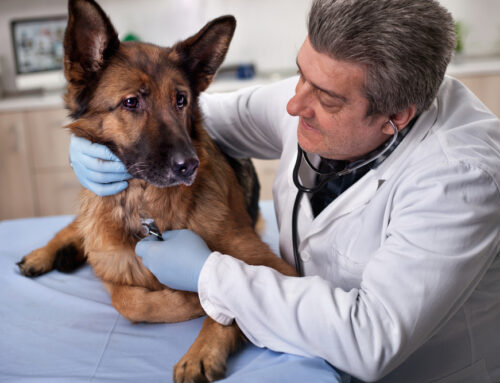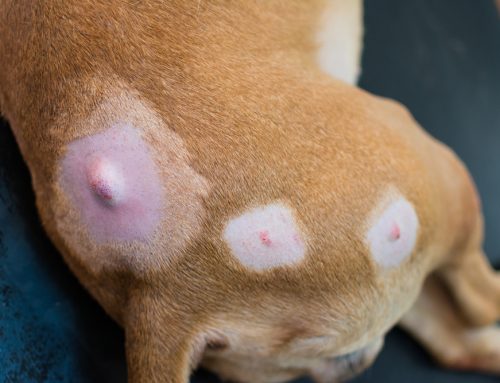You may have heard about microchipping your pet, but you’re not completely sure about its benefits, or how it works. Not to worry—many pet owners do not understand microchipping until it’s explained in detail, and common myths are banished. Our Guam Pet Hospital team wants our community to understand that a microchip is critical for your pet’s safety, and may be the only way to ensure your missing pet is reunited with your family. To help clear up any confusion you may have about pet microchipping, we set the record straight with the truth and banish the microchip myths.
Myth: Your pet needs to be anesthetized for a microchip
Truth: Many pet owners believe microchipping is a major, painful procedure that requires full anesthesia, or at least sedation. However, microchipping administration is similar to a vaccination or other injection. While the needle used to insert a microchip is slightly larger than a vaccination needle, most pets don’t react, particularly when they are distracted with tasty treats. We also offer two microchip sizes that are tailored to your pet’s breed and size to minimize any discomfort. Some pet owners choose to wait and have their pet microchipped when they are anesthetized to be spayed or neutered, but that’s not necessary. We recommend that all pets be microchipped as soon as possible to ensure the best chance of reunion, especially since young, untrained puppies and kittens are most likely to dart out an open door and become lost.
Myth: Since a microchip doesn’t have a GPS tracker, it’s useless
Truth: While it’s true that microchips don’t have GPS-tracking capabilities, they are still the single most important method of connecting you with your pet. If a Good Samaritan finds your pet and takes them to an animal shelter or veterinary hospital, they will be scanned for a microchip. Rather than languishing in a shelter, waiting to be adopted by another family or, worse, euthanized because of lack of resources, your pet can be immediately reunited with you as soon as they’re scanned and identified. In addition, Guam has 60,000 wild dogs spreading disease and attacking children and adults, which has led to stray dog roundups. If your dog escapes from your yard, a microchip may be the only thing standing between your pet and death. Even if you’ve forgotten to register your pet’s microchip, we’ll hold your pet for you, or contact you to let you know where to pick your pet up.
Myth: My pet always wears a collar, so they don’t need a microchip
Truth: Collars are not fool-proof identification methods. Collars can break and fall off and the identification tags can become worn and illegible, or you may forget to put your pet’s collar back on after their bath. A microchip cannot be tampered with and no maintenance is required, because it has no moving parts and doesn’t need batteries. A microchip is the only permanent identification form, and will remain fully functional for the life of your pet. Additionally, we have many military families with dogs on Guam, and a microchip is the only way a pet can travel with their family when they leave. The USDA will not recognize collar ID tags as identification.
Myth: Microchips are expensive
Truth: Since many people believe pets need to be anesthetized when they are microchipped, they assume the cost is high. Although you can’t put a price on peace of mind about your pet’s safety, microchips are much less expensive than you probably think. Contact our hospital for the price of a microchip insertion and registration for your pet. Registration is a one-time fee, and will always link you to your pet without additional annual charges.
Myth: People can steal my information through my pet’s microchip
Truth: Microchips do not emit your private information. A person cannot find your phone number, address, or other sensitive information simply by scanning your pet for their microchip. When a pet is scanned, their chip emits a unique number that is entered into a universal microchip number database by the shelter or veterinary hospital employee. The name of the registration company will be provided, but not your personal information. After the company is contacted about the microchipped pet who has been found, the company will contact the pet’s owner. Because the microchip company is the only one with your contact information, you must ensure the phone number on file is kept current. They will not be able to let you know your lost pet has been found if you forget to update your phone number, or your change of address.
Myth: My pet doesn’t need a microchip

Truth: According to the Guam Paws Act, all pets who reside on Guam must be microchipped. This law, passed in July 2020, requires that all pets must be vaccinated for rabies, microchipped, and licensed. Without these bare minimum requirements, you could be fined $500 or more.
A lost pet is a heartbreaking situation, especially when you know that a microchip could have reunited them with your family. Don’t wait—have your Guam Pet Hospital team microchip your pet as soon as you welcome them into your family, to ensure a happy reunion. If your pet hasn’t been microchipped already, call us to schedule a quick appointment.








Leave A Comment